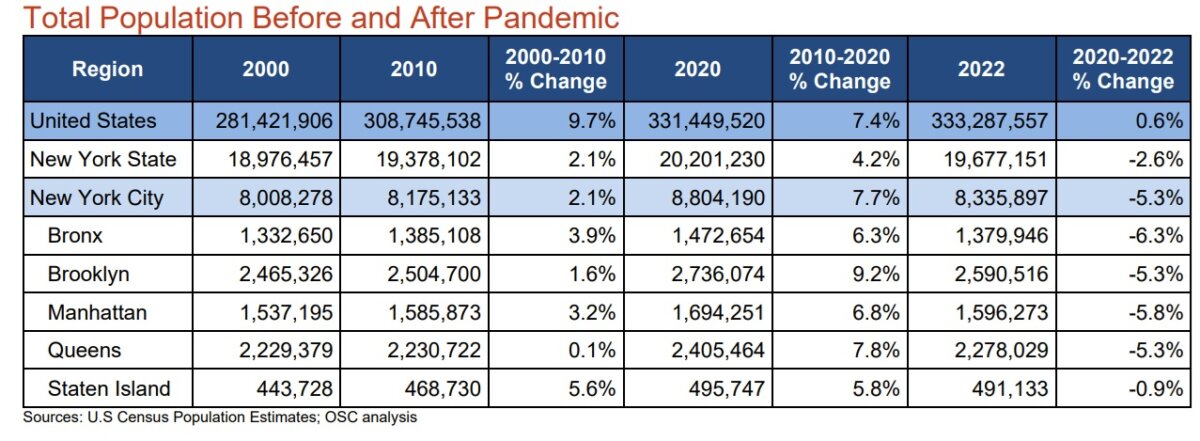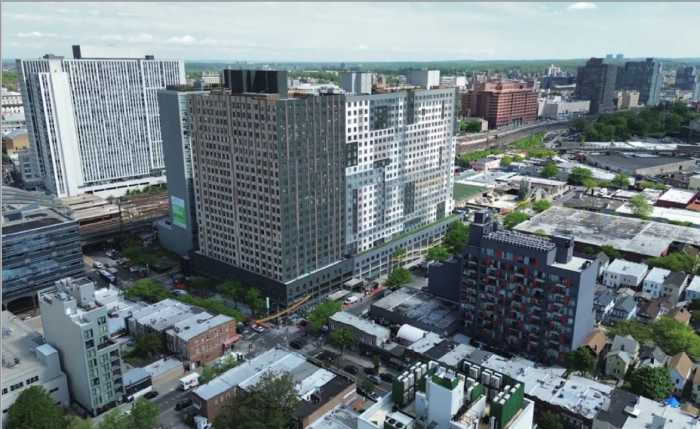The population of New York City has declined significantly since the pandemic, with Queens being no exception, according to a report released by state Comptroller Thomas DiNapoli on Monday
At the beginning of 2020, New York City boasted a population of 8,804,190, marking a decade-long trend of a 7.7% increase in residents since 2010 when the population stood at 8,175,133. However, the pandemic had a profound impact, causing a 5.3% reduction in the city’s total population, leaving 8,335,897 residents in the five boroughs by 2022.
Queens’ decline over the two-year period was in line with the city as a whole. The World’s Borough saw a 5.3% drop in population, with the number of residents falling from 2,405,464 in 2020 to 2,278,029 in 2022, according to the report.
The study attributes most of this population loss to residents relocating to other parts of New York State or New Jersey, citing the lower cost of living in these areas as the primary driver of migration. Other contributing factors include the increased ability of employees to work remotely and the desire for more living space during extended periods of quarantine.
DiNapoli emphasized the importance of understanding these population shifts, stating, “Ongoing changes to the city’s makeup have important implications for the budget and policy decisions we are making today. We need the city to remain competitive on the world stage and a place where people want to move, put down roots and thrive.”
While the pandemic’s effects were felt citywide, not all areas were equally impacted:
While Queens experienced a 5.3% decline, other boroughs fared worse. The Bronx saw the most significant decrease, with a 6.3% drop, from 1,472,654 in 2020 to 1,379,946 residents in 2022. Manhattan witnessed a 5.8% decline, with its population decreasing from 1,694,251 in 2020 to 1,596,273 in 2022. Meanwhile, Brooklyn faced a 5.3% decrease, going from 2,736,074 residents in 2020 to 2,590,516 in 2022.
In contrast, Staten Island, known for its lower cost of living and less population density, experienced only a minimal decline of 0.9%, from 495,747 in 2020 to 491,133 residents in 2022.

The study also revealed significant demographic changes in the city’s population. High-income earners remained in New York City, leading to a substantial increase in the percentage of households earning over $100,000 annually, rising from 23% in 2010 to 39% in 2022. Conversely, those earning less than $100,000 constituted a larger share of those who left the city.
Additionally, the median wage of those moving into the city in 2022 was $51,000, a 13.3% increase from 2021. In contrast, those leaving the city in 2022 had a median income of $49,000.
The study also highlighted changes in age demographics. Between 2020 and 2022, the share of residents under 18 declined by 7.5%, a much steeper drop than the national decline of just 1.5% in that age group. Young adults aged 18 to 44 also saw a significant decrease of 7.6% during the same period.
Comptroller DiNapoli suggested that the movement of parents with young families out of the city contributed to these declines. As a result, the share of older adults, especially seniors, increased by 6% in the city’s total population.
These shifting demographics pose challenges for New York City, particularly in terms of addressing the cost of living and bridging the growing wealth gap. The comptroller said the city needs to take steps to preserve a strong middle class, while accommodating the needs of an aging population and ensuring that families can continue to raise their children in the city.
The comptroller emphasized the importance of developing long-term solutions to address these evolving population dynamics.




































